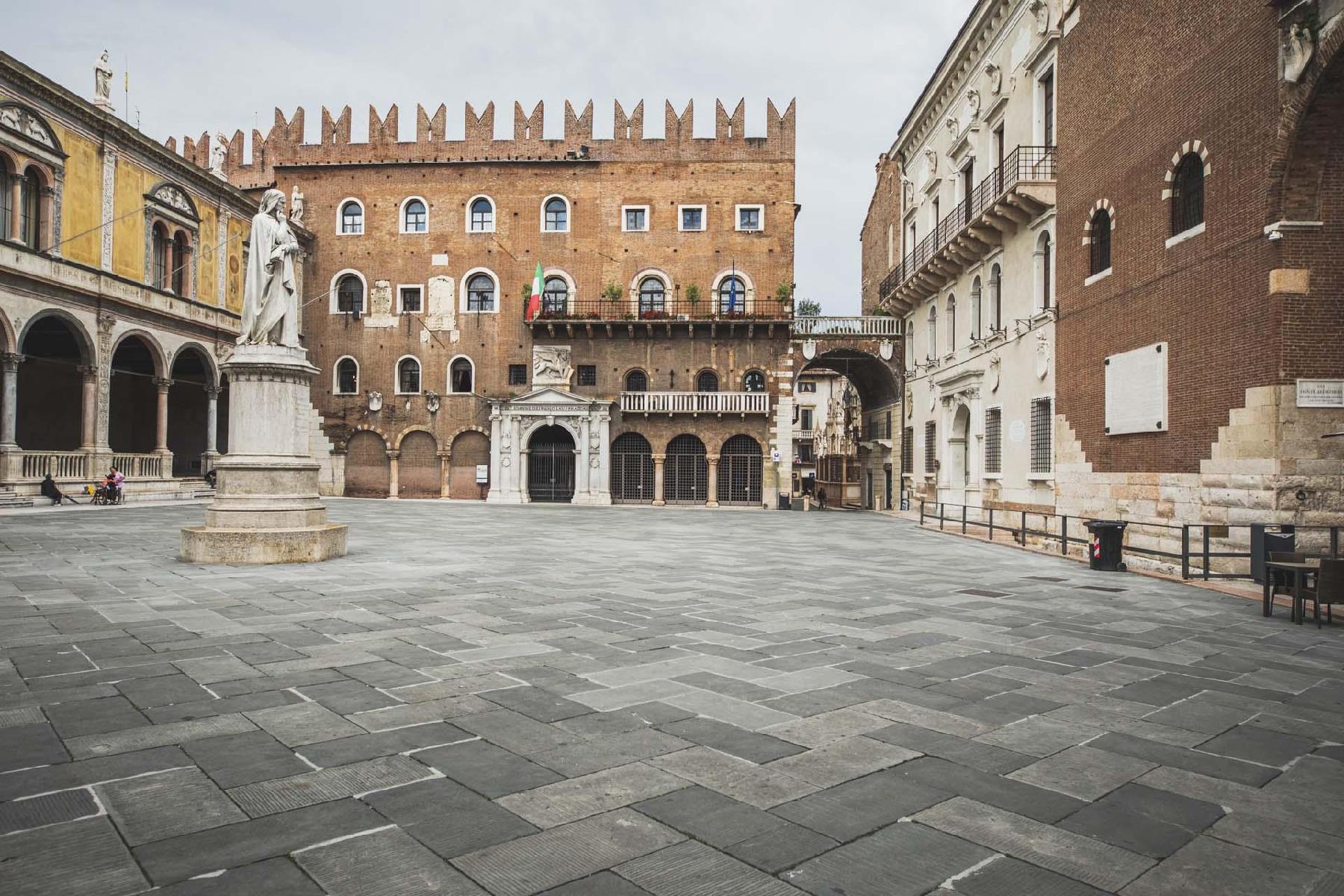Contenuto

The venue of the Meeting
The palace of the Province of Verona, which is now the seat of the Prefecture, was built by Cangrande della Scala as his own residence; construction work must have been completed by 1311, when it was mentioned in documents for the first time as the "palacium novum domini Canisgrandis de la Scala".
Originally, the whole complex was built to a horseshoe pattern between today’s Piazza dei Signori, Via Santa Maria Antica and Vicolo Cavalletto. Designed to overlook both the "platea dominationis" and the traditional burial ground of the Della Scala family – the Santa Maria Antica Cemetery, without the Arches which were built later), its spatial continuum established and bonded the public and private authority of the lineage.
Dante was a guest of Cangrande here during his exile in Verona in the 1320s. But there is some doubt about Vasari's account in his ‘Lives’ that Giotto might have stayed there around 1316, as all he actually said in the second edition of ‘Lives’ was that Giotto had produced "some paintings, and particularly the portrait of His Lordship" for Cangrande.
However, the original aspect of the building has been radically altered over time to adapt it to different uses.
In the 1360s, the Loggia di Cansignorio was added, extending the complex towards Corso Sant'Anastasia, where the famous Great Hall was built, decorated with episodes from Flavio Giuseppe's Jewish War painted by Altichiero and Jacopo Avanzi.
After 1405, the palace became the seat of the Venetian Podestà; during the rule of the Serenissima, certain major additions were made to the complex, such as the construction of the Loggia del Consiglio in 1492, and the Porta di Michele Sanmicheli on Piazza dei Signori in 1533, and the large building facing the Loggia di Cansignorio was added in 1560, extending the whole complex towards the Corso, which finally established the whole estate as we see it today.
The pronounced mediaeval look of today’s palace was the result of the radical restoration work carried out between 1927 and 1930. The façade facing Santa Maria Antica was remodelled, while the façade in Piazza dei Signori was radically 'reinvented'. Battlements were added to the front of the building, and the Venetian-era loggia was reopened in the corner between the piazza and Via Santa Maria Antica.
The interiors were sumptuously decorated with ornamental stylised paintings, many echoing the geometric and plant motifs of the original 14th-century paintings of which many fragments are still visible in a few rooms of the palace. These had been the paintings of the Della Scala Court, which Dante had know when he had stayed in Verona.


